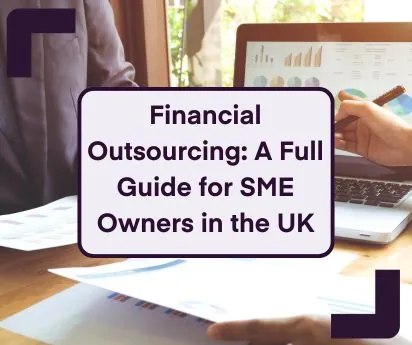
Paying Wages & Sick Pay for Employees During Covid-19
2 May 2020The Covid-19 crisis has taken an extraordinary toll on the UK. Essential workers in many sectors have been severely tested – the health service, a broad range of service businesses, educators, and emergency services personnel – the strain almost reaching breaking point at times. While thousands of workers have reacted to the effects of the pandemic, part of the strategy for coping has been to stand others down. Protecting health service capacity has been a crucial part of the fight against the virus from early on. That’s resulted in lockdown and the furloughing of non-essential employees. With that in mind, here's some advice for business owners on paying wages and sick pay for employees during Covid-19.
How to continue to pay staff over the next few months
Implementing an employee furlough
Businesses everywhere have been mothballed for months now, put into forced hibernation. The government has also taken some unprecedented steps to protect and preserve the UK workforce as much as possible; read more on the Government support available for businesses.
While that should be good news for business owners when things get back to normal, it’s created some headaches in the here and now, as we grapple with new rules and procedures. So, what do you need to do when you furlough a staff member? Well, first up, it’s vital you accurately designate any affected people as ‘furloughed workers,’ and notify the employee of this change appropriately. You’ll need to use a new, dedicated HMRC web portal to submit information about their earnings too:
-
A written agreement from the furloughed employee is essential. That can be as simple as an email from the employee, confirming they agree to the measure. There’s a whole article on the furlough scheme here which explains everything in detail
-
You must set a start date for the furlough
-
You can backdate this as far as the 1 March 2020, if required. You can also use the scheme for staff that have already been made redundant
-
HMRC guidelines state employees need to have been paid and payroll submissions done on or before 19 March 2020.
-
You’ll have to submit weekly/monthly payroll as usual to HMRC
-
Be mindful of the information you’ll need to have on hand to make a claim. The number of employees you have, PAYE references, specific claim periods, the average pay for employees, and their bank details
-
HMRC will reimburse you for 80% of staff wages. However, you can opt to top up the amount so that employees receive their regular pay.
Related: How Businesses Can Recover From The COVID-19 Pandemic
Related: Covid-19: Support from UK Government FAQs
Paying statutory sick pay during the pandemic
Here at Accounts & Legal, we’ve been fielding tons of questions from clients about Statutory Sick Pay (SSP) during COVID-19. Especially in smaller businesses, changes to sick pay rules have made for a lot of confusion – and it’s essential to know you’re doing the right thing because mistakes can have costly and financially profound implications.
The very nature of the crisis has produced a need to adjust required employer reactions to illness and absences. Again, we’ve tried to condense those implications into something quick and easy to reference if your business is affected. Consider this a starting point, but it’s always a good idea to get expert answers to queries regarding payroll and sick leave when you need them:
-
Under normal circumstances, if any of your employees are too ill to carry out duties and earn more than £120 per week, you’ll need to pay them £95.85 in SSP every week for up to 28 weeks
-
A Coronavirus Amendment to SSP means that the UK government will refund small and medium-sized businesses for any sick leave paid due to COVID-19, covering the first 14 days of absence
-
Small and medium-sized businesses are defined as having fewer than 250 employees on 28th February 2020
-
Employees are entitled to SSP if (a) they’re self-isolating due to themselves or a household member displaying virus symptoms or (b) they’re staying at home because of ‘shielding’
-
All employees wishing to self-isolate and claim SSP must get an ‘isolation note’ from NHS 111 online, rather than visiting the doctor. Employers don’t need a note from the doctor after seven days of absence, as in the normal sick leave SSP circumstances.
-
After 13th March, you’ll need to pay SSP for every day of self-isolation. Before that date, the usual SSP conditions apply, and you pay from the fourth day of absence.
Coping with Covid-19, sick pay, and furloughing – help is at hand
The Coronavirus Job Retention Scheme has led efforts to prevent mass redundancies and ensure there’s still a functioning commercial infrastructure in this country once the virus passes. Nothing during the current crisis has been ideal. We’ve all had to adapt and do our part. Most measures have needed to be hastily assembled. While the system designed to reimburse 80% of employee wages has been a steep learning curve for many – it’s also enabled UK employers to retain more than seven million staff who might otherwise have lost their jobs.
Changes to SSP have also been necessary to deal with the effects of mass self-isolation and infection. It’s been a lot to take in on top of all the other disruptions – but you do have support available. Our friendly small business accountants and employment law solicitors can assist with any Covid or non-Covid related payroll issues. We’re experts on employment law too. If you have an SSP or furloughing question, please don’t hesitate to get in touch with us on 0207 043 4000 or info@accountsandlegal.co.uk. Or, why not let us help you manage your finances? Get an instant accounting quote in just a few clicks.
























